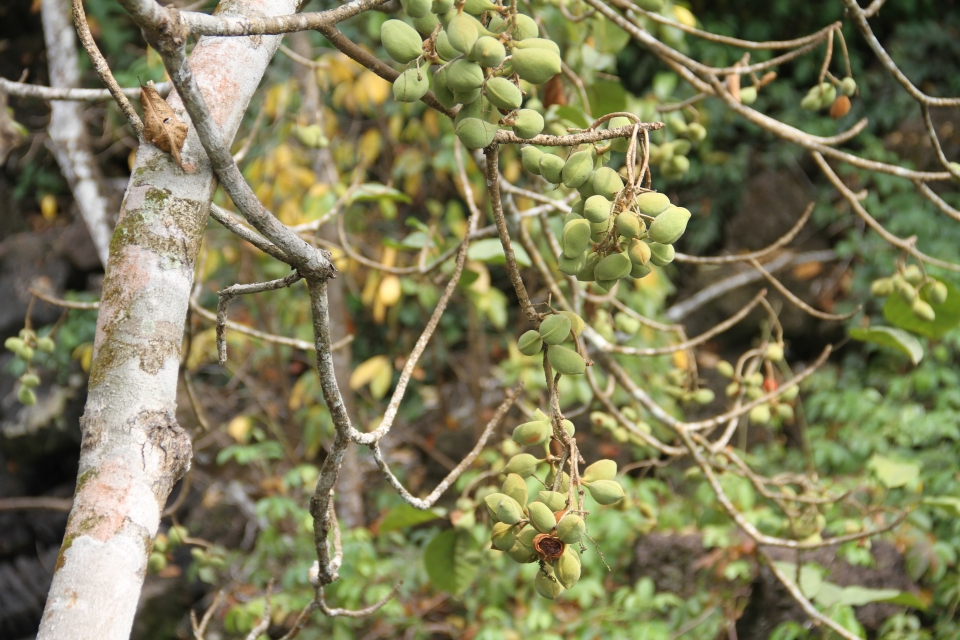Sterculia tragacantha

|
|
·
Kingdom: Plantae ·
Clade: Tracheophytes ·
Clade: Angiosperms ·
Order: Malvales ·
Family: Malvaceae ·
Genus: Sterculia ·
Species: Sterculia tragacantha ·
Binomial Name: Sterculia tragacantha Lindl. Synonyms: Sterculia tomentosa Common Names: Star
chestnut,Karaya gum,Indian tracanth Local Names: Alawefon,
Omurin,olofulofulo,omurun,Orotopo,Kukku-kinrafi Species ID: NMP-170;wfo-0000492472;NCBI_Taxonomy ID: 66668 Description Sterculia tragacantha is a deciduous shrub or
tree that can grow between 5 to 25 meters tall. It features a small, sparsely
branched crown with a bole that can be 75 cm in diameter, sometimes with winged
buttresses. The tree produces small, yellow flowers and large, lobed leaves. Distribution and Habitat This species is
native to West Tropical Africa, extending to West Tanzania and Zambia. It
thrives in wet tropical biomes, often found in forests and along rivers. Medicinal Properties The tree's gum,
similar to gum tragacanth, is used for its demulcent properties, though not
often internally due to partial solubility. It has been used traditionally for
treating burns and as an ingredient in lozenges to bind and add consistency.
Recent studies suggest the gum has immune-stimulating and tumor-suppressing
properties. Known Toxicity There is no
significant evidence of toxicity in Sterculia tragacantha when used
appropriately in traditional medicinal practices. However, its gum should be
used with caution, considering its solubility characteristics. Additional Information The young shoots and
leaves are edible when cooked and are used in various traditional dishes. The
seeds can be roasted and eaten like peanuts. The gum is used in confectionery
and to adulterate gum arabic. References
External
links
More Pictures |
|
| Compounds of Sterculia tragacantha | |
| References |